Nordic Semiconductor releases the nRF7002 Wi-Fi 6 Development Kit
Nordic Semiconductor is well known for Bluetooth and Cellular IoT system chips that provide high functionality with a low power cost. Their communication system chips and companion ICs are so ubiquitous that you almost certainly own a device with an nRF series chip inside it - and if you've ever set up wireless communication with an Arduino, the module likely has a Nordic chip running the show.
Until recently, Nordic didn't have a Wi-Fi-compatible chip to complement its BLE and Cellular System on Chips (SoCs) and System in Packages (SiPs). That all changed last November when Nordic announced their nRF7002 WiFi 6 companion IC.
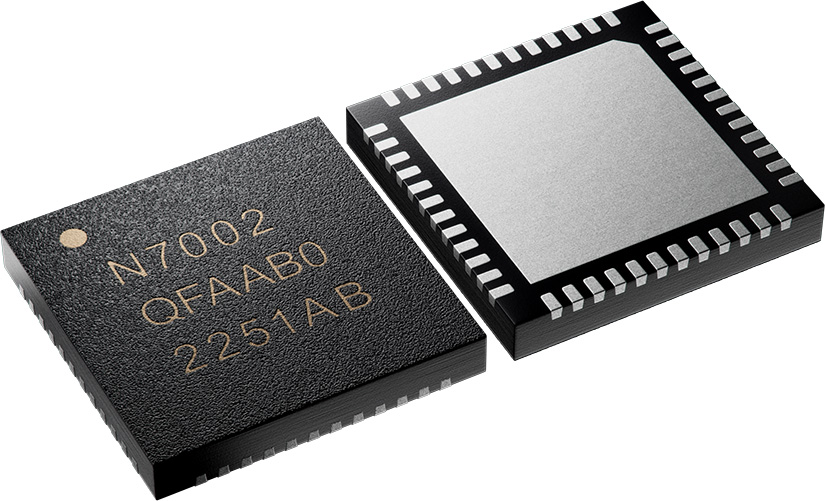
We spoke with Ioannis Glaropoulos, Technical Product Manager at Nordic Semiconductor, about the new IC at Electronica 2022 and saw an early prototype of a possible development kit for the IC. Fast forward to now, and the nrF7002 DK is here and just as fully featured as we've come to expect from Nordic's evaluation kits.
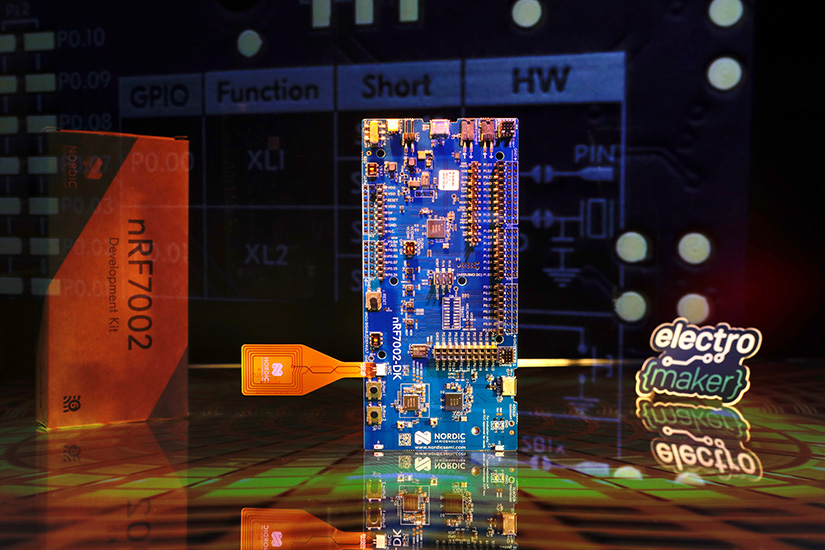
Today marks the release of the nrF7002 DK, and this Maker Board Spotlight will give you a brief rundown of what to expect from the DK and Wi-Fi 6, along with where to get your own DK if you want to get started working with the new hardware!
The Nordic nrF7002 DK: In Brief
As far as form factor goes, the nRF7002 DK looks much like most other full sized Nordic development kits.
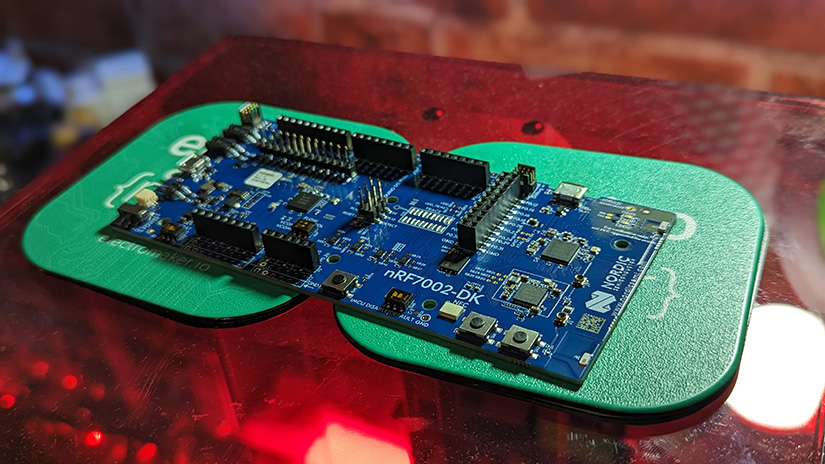
The core of this kit is the nRF7002 IC, a Wi-Fi 6 capable companion IC designed to run alongside Nordic's present tech stack. It uses the same nRF Connect tools and workflow and is designed to leverage the low-power operation possible via Wi-Fi 6. The companion IC communicates with a host nrF5340 SoC via QSPI. This means, in essence, that the nRF7002 DK is capable of everything the nRF5340 DK could do, with the added benefit of Wi-Fi 6 fitting (theoretically) into any already existing prototype.
Outside of the system chips, the board has an Arduino shield-compatible header, two user-definable buttons and LEDs, SWF RF Connectors, NFC, 2.4 and 5 GHz antennas, SEGGER J-Link onboard programmer and debugger, and power injection and measurement pins.
It can be powered at anything from 2.9 to 5v via USB, battery, or via power-in pins. At the time of writing this, there are already a few examples available via the nRF Connect SDK, and there will likely be many more as the board becomes widely available - I imagine Edge Impulse support won't take long, given previous board support!
We'll take a look at the nRF7002 capabilities in a moment, along with some potential use cases, but if you've read enough and want to get your hands on a development kit, the projected retail price of the nRF7002 DK is $62, and it is available via the nRF7002 DK Product page.
Nordic nRF7002 DK: In Specs
It's probably best to split the DK into the nRF7002 companion IC and the host nRF5340 SoC.
nRF7002 Wi-Fi 6 companion IC
The companion IC found on the nRF7002 DK is designed to work seamlessly with Nordic's entire line of SoCs, but it'll also happily work with any other host MCU.
- 2.4 GHz and 5 GHz dual-band
- Low-power and secure Wi-Fi for the IoT
- Ideal coexistence with Bluetooth LE
- Supported in nRF Connect SDK
- Target Wake Time (TWT)
- SPI / QSPI
- Wi-Fi 6 Station (STA)
- Complies with 802.11a/b/g/n/ac/ax
- 1 Spatial Stream (SS)
- 20 MHz channel bandwidth
- 64 QAM (MCS7), 86 Mbps PHY throughput
- OFDMA (Downlink and Uplink)
- BSS coloring
- Co-existence interfaces
What's the big deal with Wi-Fi 6?
This isn't the correct place to go into a deep dive of Wi-Fi 6 features, but there are a couple of things worth quickly noting. Until recently, truly low-power Wi-Fi just wasn't possible, but features like Target Wake Time (TWT) and OFDMA (Orthogonal Frequency Division Multiple Access) deserve a quick look at, as they radically change the way Wi-Fi can be used in industrial, AIoT and Smart City settings.
One of the many benefits WiFi 6 brings is greatly improved Target Wake Time (TWT). TWT allows an access point to decide when specific devices can access the wireless network. This allows those devices to turn on and off based on their need to send or receive data, which reduces their battery usage since they don't need to be on constantly. With TWT, a WiFi 6 access point can determine when a device should sleep and wake up, meaning it could stay off for extended periods of time - even days or weeks - while still conserving battery. This also helps to decrease interference caused by conflicts and overlaps between devices.
At a high level, OFDMA (Orthogonal Frequency Division Multiple Access) is a method of dividing a single channel into multiple smaller channels for use by multiple users. It works by dividing the frequency spectrum into multiple orthogonal (non-conflicting) subcarriers, each of which can be assigned to a different user.
This allows multiple users to transmit data at the same time, allowing the base station to receive multiple signals simultaneously. Much like TWT, OFDMA decreases the likelihood of interference and allows for more network throughput with a lower power cost.
We haven't even started talking about Wi-Fi-based "locationing" - the process of using Wi-Fi hubs in the environment to determine position - something the nRF7002 is also perfectly designed for.
While it's not an important point when working with the DK, the nRF7002 IC alone is highly compatible with other host MCUs and processors, including Real-Time Operating Systems (RTOS), and Linux-based host computers.
However, the DK isn't only made up of the Wi-FI IC. It also features an nRF5340 host SoC.
The nRF5340 SoC
The nRF5340 has been a processor central to many projects, and Nordic has several different kits to get the most out of it. It's a fully featured SoC for BLE, mesh, Zigbee and Thread, and is Matter compatible - along with being quite a powerful processesor for general purpose tasks.
Rather than go into great detail here, you can read our original review of the nRF5340 DK from 2021.
What Could I Make With the nRF7002?
One problem I frequently face when writing about development boards and kits is the question of what could be built with the - when the answer is almost always nearly everything. However, Nordic products have historically been ideally suited to local communication protocols like BLE and Zigbee or Thread, and Cellular IoT. this made them perfect for smart home and sensing in industrial environments, but they lacked the wider connectivity that Wi-Fi brings, largely down to it's monumental power needs.
Given the way the nRF7002 is integrated into the Nordic product line, almost any existing project based on the nRF Connect SDK could be easily ported to incorporate the new IC, and given the Arduino-compatible GPIO pins, a vast array of ready-to-use sensor modules would also be easy to include in new designs.
Are you using a custom Zigbee or Thread setup? Well, now you can theoretically add a native cloud layer to your device without causing conflicts with the original design. One of the key points of the nRF7002 release materials is the concept of "seamless coexistence," meaning that whatever project structure or power requirements you are already working with shouldn't affect the ability to incorporate the companion IC into your design.
Of course, Wi-Fi widens the possibilities quite a lot. The prospect of adding Wi-Fi 6 connectivity to a project without a huge power cost will be something a lot of embedded engineers have been looking forward to, and the added location data available via Wi-Fi will broaden the scope of many existing projects based on Nordic's tech stack.
If you are interested the new IC or the nRF7002 DK, you can find further information, including purchasing links, on the Nordic Semiconductor nRF7002 DK product page.





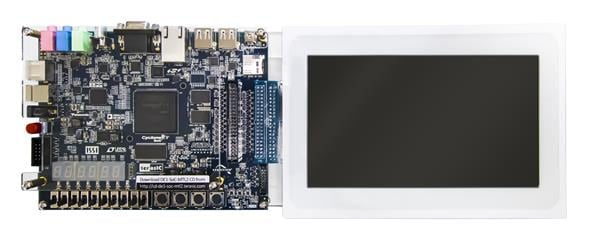
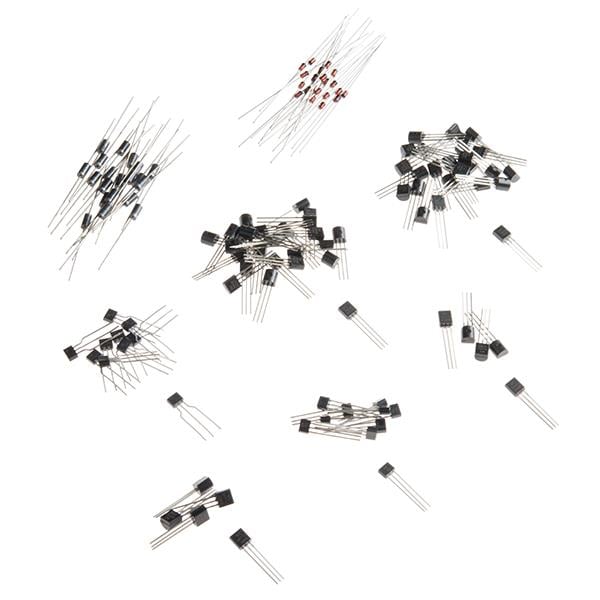

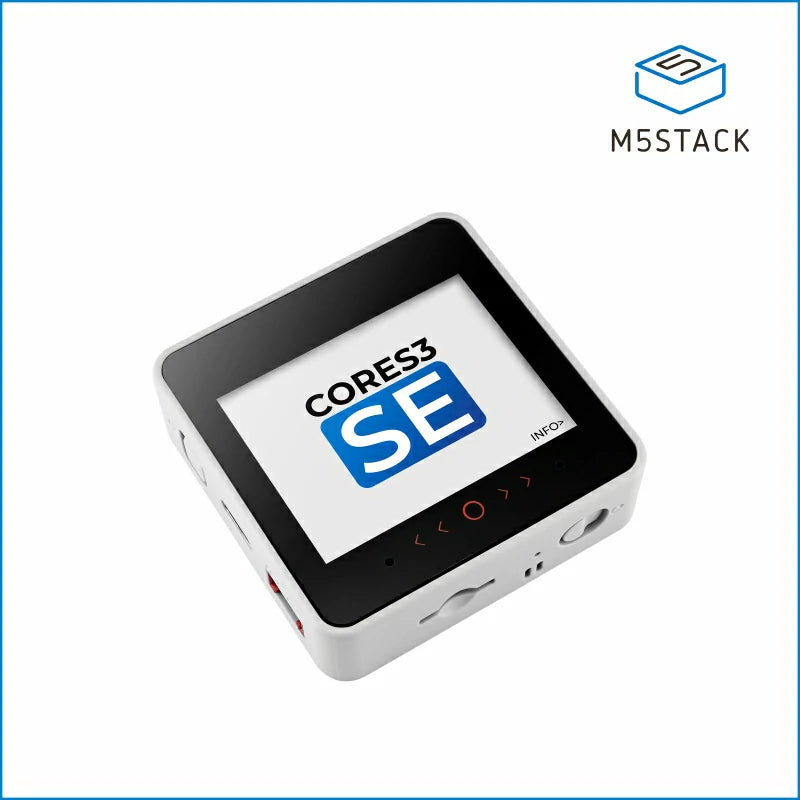
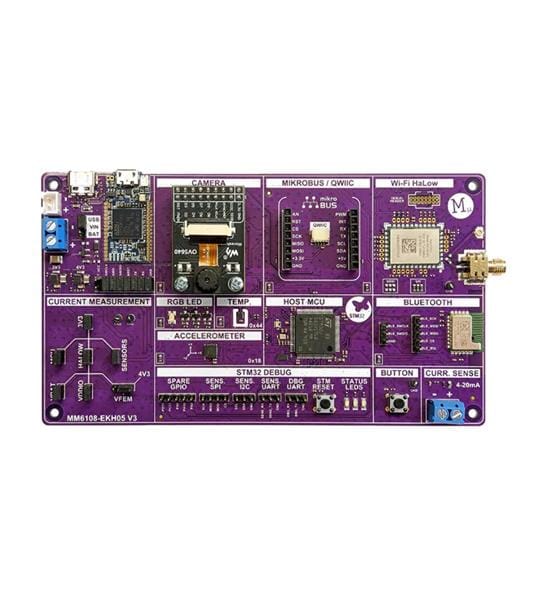
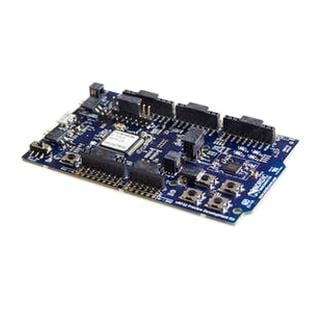
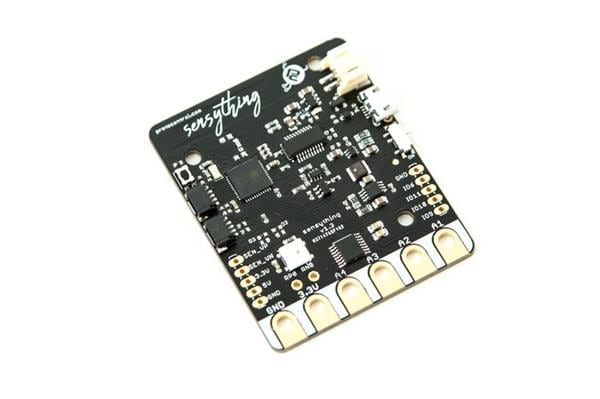
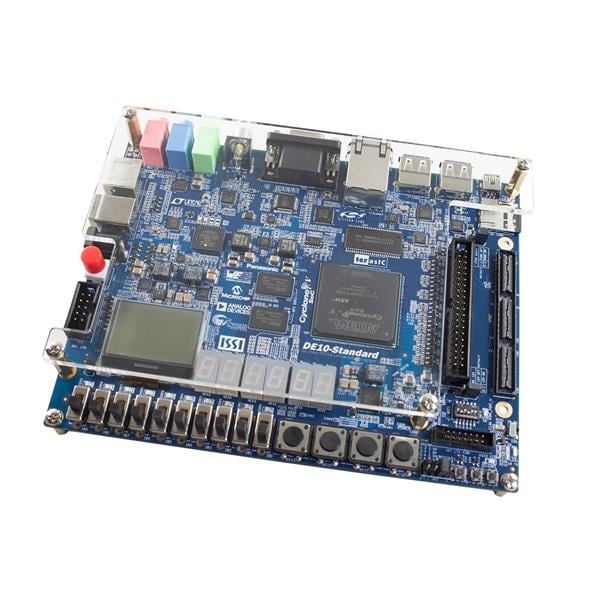
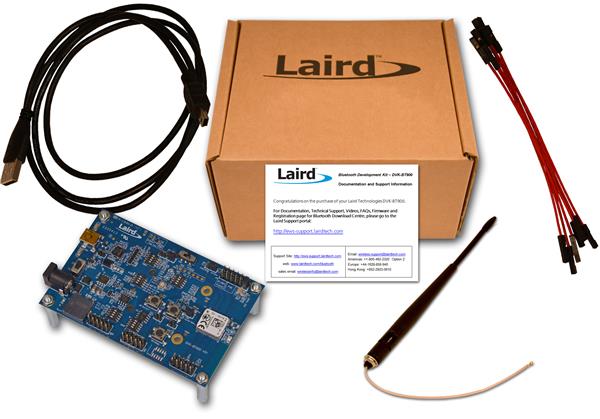
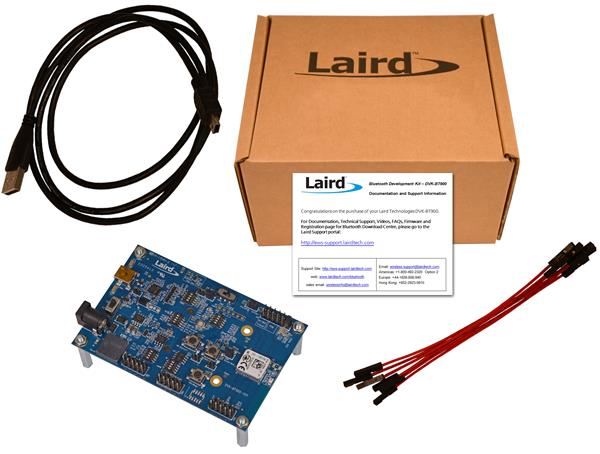
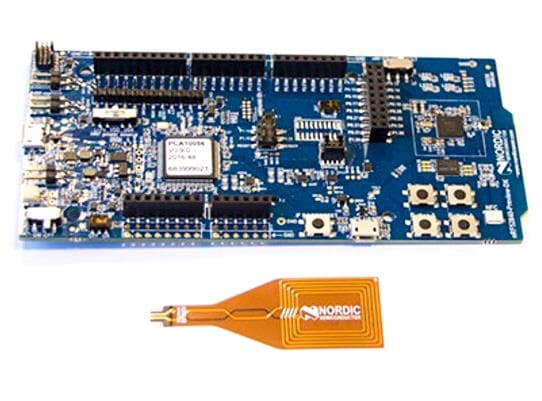
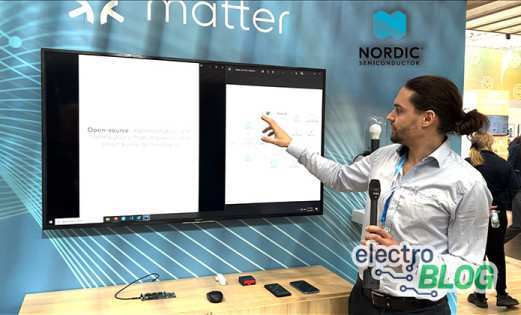
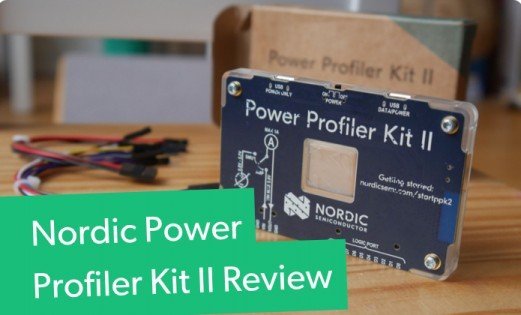
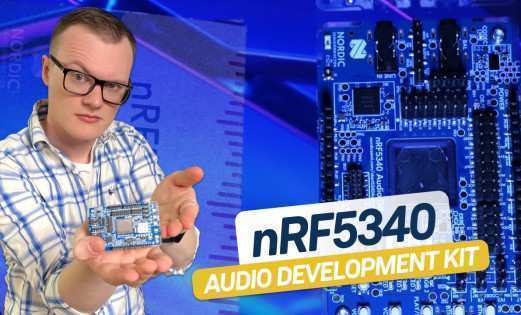
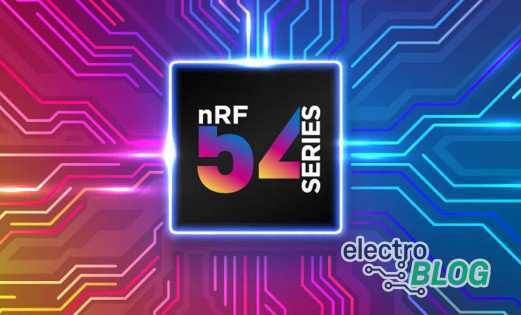
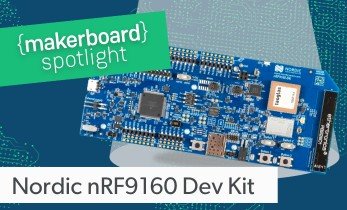
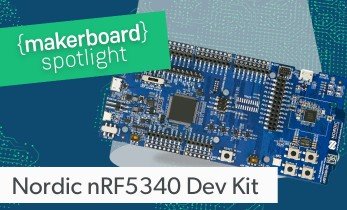

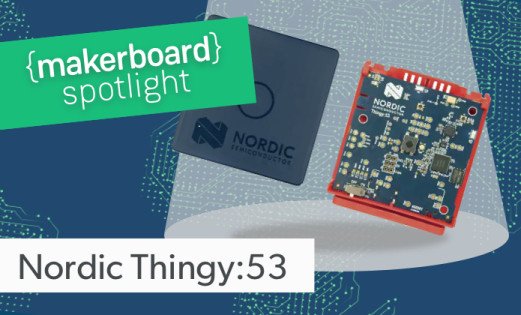
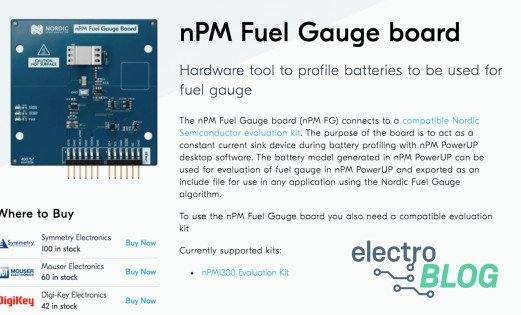
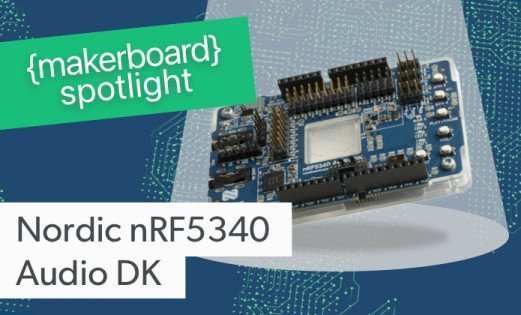
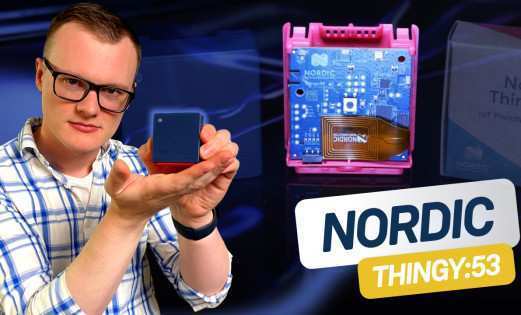
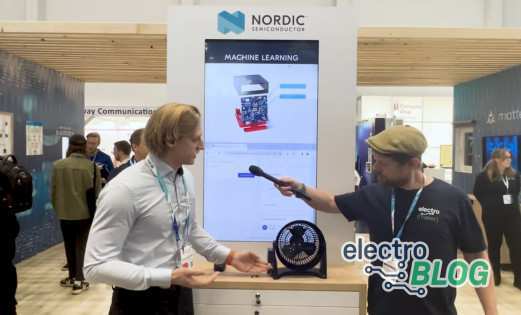
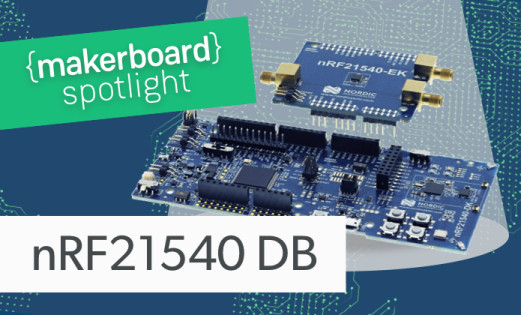
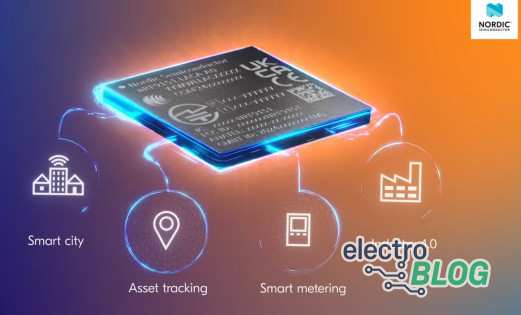
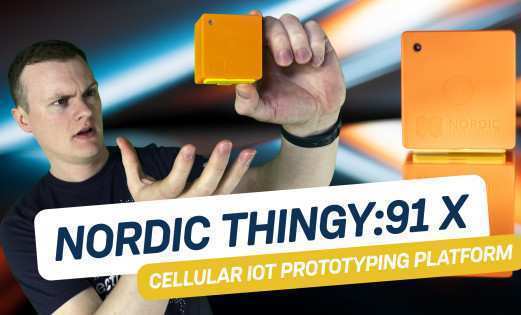

Leave your feedback...